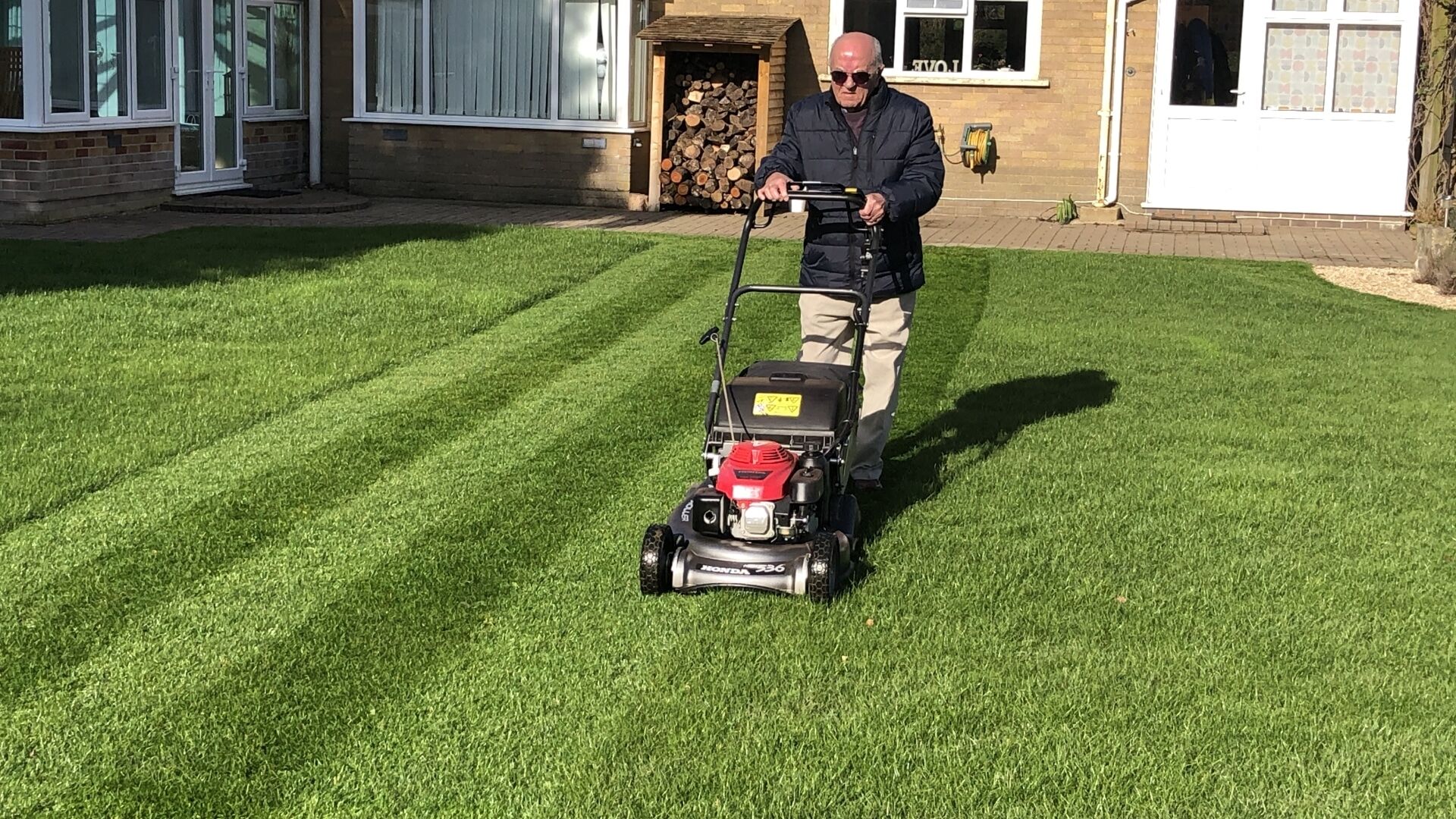Home ▸ Lawn Care Guide ▸ Mowing your lawn ▸ Rotary mowers
Rotary mowers

The rotary mower is the most popular type of mower in the UK because is the most durable and easy to use and is suitable for most types of lawn.
Rotary mowers have a flat blade that is spun, face-down, directly onto the grass. All the cutting components are contained within a shrouded housing, so there is much less opportunity for mishap or injury. Rotary mowers are less sensitive and more rugged, which means they take all manner of garden debris like twigs and weeds in their stride, but work best on a medium to high cut, meaning they may not be an appropriate choice if you are looking for a very fine finish. However, they tend to be a very common choice for the average lawn owner, as they are a good all-rounder and suited to different grass and lawn types.
Most have some form of grass box to collect the clippings and others include features like a roller for creating stripes or mulching attachments that shreds the clippings down finely to be returned to the lawn.
You will need to decide between: Petrol, electric or rechargeable battery?
Petrol lawnmowers tend to be more powerful and heavy duty, so tend to handle uneven surfaces better. However, they can be more expensive to run; like anything with an engine, it will need regular servicing. Even if you get a model with driven wheels to help you push, these heavy-duty machines can be a lot heavier due to the engine and can more difficult to move around. Electric mowers have to be plugged in and manoeuvring around the lawn with a cable trailing is one thing aspect that can put people off. You must make sure to use a Residual Current Device (RCD) with all outdoor electrical equipment or use a plug-in RCD if you don’t have one built into your fusebox.
Although you’ll need to take care with the cable, many people choose these over petrol rotary mowers as they tend to be lighter, have no nasty pollution and no engine to service (though you will still need to complete some mower maintenance, like keeping the blade sharp). They are also quieter than petrol versions so may be more appropriate if you live in a built-up area.
You can also get battery powered mowers, which more people are choosing to avoid dealing with the cable. There have been improvements in battery technology making these a much more viable choice, but these tend to be suited to smaller lawns under 500m2.
Dealing with Clippings
Many lawn mowers will have either a box for collecting the grass clippings or have a mulching attachment which shreds the grass down finely and returns it to the lawn. Though this can have some benefits, generally we don’t advise leaving clippings on the lawn, with our preference being collecting the clippings and adding to the composter.
The risks with leaving clippings on the lawn is that older leaves and stems may take longer to decompose on the lawn than expected, which can lead to thatch build up or encourage lawn diseases.
Roller or no roller?
If you dream of having a striped lawn but are unconvinced that a cylinder mower is for you, you can get rotary mowers with a rear roller attachment. This helps achieve the professional striped finish, but without needing as much work as a cylinder mower requires. They often also have inset wheels also allow the user to cut right up to edges, giving lawns a neat and tidy finish and removing the need to use a trimmer.
Pros
- Suitable for the majority of domestic lawns
- Cope better with longer grass and less even terrain
- Good cutting height adjustability on many models
- Blade is easy to sharpen or replace
Cons
- Don’t give as neat a cut as a cylinder mower, as they can tear the blades of the grass rather than cut them when blunt
- Can be heavy
- Manoeuvring with cable can be awkward
- Mulching rotary mowers are not advisable for a manicured lawn

